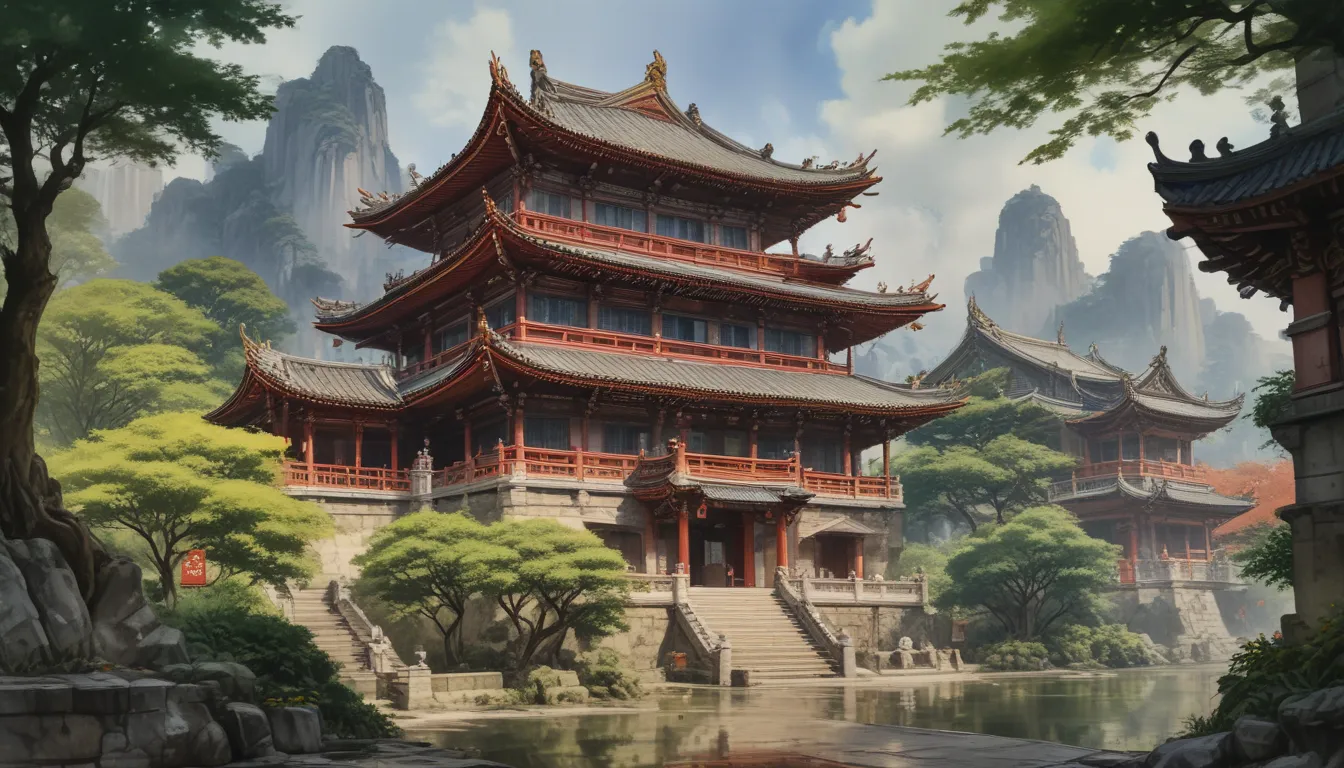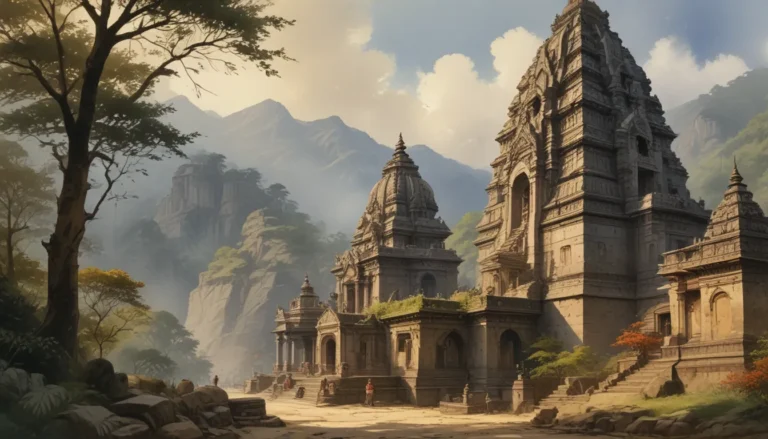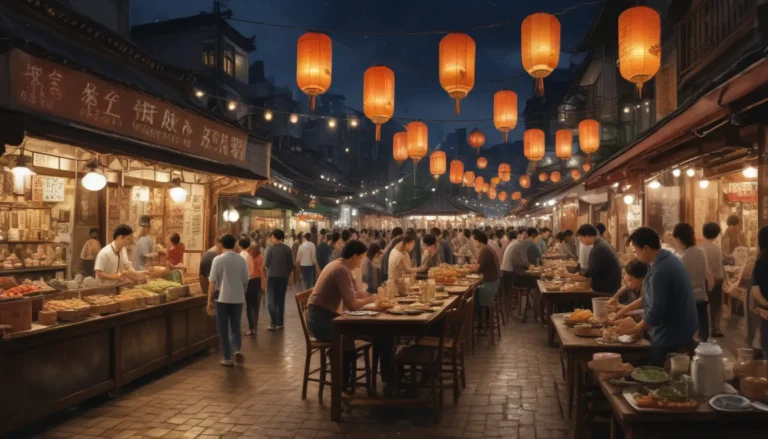The images in our articles are for illustrative purposes only and may not exactly match the content. They are intended to capture your interest and complement the text, not to replace it.
Taipei, Taiwan, is home to the captivating Longshan Temple, a historical landmark that has stood the test of time for centuries. This magnificent temple attracts millions of visitors annually with its undeniable beauty and rich cultural heritage. Stepping into the temple grounds is like entering a different world, where traditional Chinese architecture, intricate wood carvings, and ornate decorations take center stage.
Discovering Longshan Temple: A Symbol of Resilience
Established in 1738 by settlers from Fujian, China, Longshan Temple is the oldest and most renowned temple in Taipei. It has played a vital role as an important religious site for over two centuries, enduring challenges such as fires, earthquakes, and even bombings during World War II. Despite these adversities, the temple has been reconstructed and restored, symbolizing resilience for the people of Taipei.
Unveiling the Architectural Marvels of Longshan Temple
Longshan Temple boasts an exquisite architectural design that combines traditional Chinese and Taiwanese influences. The temple’s intricate carvings, vibrant decorations, and colorful motifs create a true masterpiece that captivates all who visit.
Embracing the Spiritual Significance of Goddess Guanyin
Dedicated to the Buddhist goddess Guanyin, known as the goddess of mercy, Longshan Temple is a revered place of worship. Devotees flock to seek blessings, guidance, and compassion from Guanyin, adding to the temple’s spiritual ambiance.
Cultural Diversity within Longshan Temple
Within the temple complex, over 100 deities from various cultures and religions are worshipped, reflecting the inclusive and harmonious nature of Longshan Temple. This diversity showcases the temple’s role as a symbol of cultural unity.
Healing Waters and Cultural Preservation
The water from Longshan Temple’s wells is believed to possess healing properties, attracting many visitors who seek its blessings for good health and luck. Additionally, in 1985, the Taiwanese government recognized Longshan Temple as a Class II historical site, preserving its cultural significance and value for future generations.
A Hub for Historical Events and Community Festivities
Longshan Temple has been witness to numerous historical events, offering solace during times of war, political unrest, and natural disasters. Beyond its religious significance, the temple serves as a cultural center and community hub, hosting events, festivals, and performances that showcase Taiwan’s rich heritage.
Exploring the Dragon and Tiger Pagodas
The iconic Dragon and Tiger Pagodas within the temple complex feature colorful motifs and provide a spiritual experience for visitors. Symbolizing the journey from darkness to enlightenment, entering through the dragon’s mouth and exiting through the tiger’s mouth is a unique ritual that adds to the temple’s mystique.
Immersing in Spiritual Serenity at Longshan Temple
During the evenings, Longshan Temple is illuminated, creating a serene and captivating atmosphere. Visitors gather to offer prayers, experience the spiritual bliss, and soak in the temple’s tranquil ambiance.
Longevity Prayer Stones and Feng Shui Principles
Longshan Temple is adorned with prayer stones engraved with Chinese characters symbolizing longevity, where visitors can make wishes for a long and healthy life. The temple’s architectural layout incorporates feng shui principles, enhancing its spiritual aura and overall charm.
In conclusion, Longshan Temple stands as a remarkable testament to Taiwan’s cultural heritage and spiritual traditions. Whether you are drawn to its architectural beauty, cultural significance, or spiritual practices, the temple offers a multitude of experiences for every visitor. Exploring the temple’s hidden chambers and witnessing ritual ceremonies can provide a deeper understanding of its centuries-old traditions.
Frequently Asked Questions about Longshan Temple
- How old is Longshan Temple?
-
Longshan Temple was built in 1738 during the Qing Dynasty, making it over 280 years old.
-
Is Longshan Temple open to the public?
-
Yes, Longshan Temple is open to the public and welcomes visitors from all over the world.
-
Are there any rules or etiquette to follow when visiting Longshan Temple?
-
Visitors are required to take off their shoes before entering, dress modestly, avoid flash photography and loud talking as a sign of respect.
-
Can I participate in spiritual ceremonies at Longshan Temple?
-
Yes, visitors are welcome to observe or participate in the regular rituals and ceremonies at Longshan Temple, respecting the temple’s traditions and guidance.
-
Are guided tours available at Longshan Temple?
-
Yes, guided tours offer valuable insights into the temple’s history and cultural significance, enriching visitors’ understanding of Longshan Temple.
-
What other attractions are nearby Longshan Temple?
- Located in the vibrant Wanhua district, Longshan Temple is surrounded by night markets, historic landmarks, and cultural sites like the Huaxi Night Market and Bopiliao Historic Block, offering a complete Taipei experience.
Longshan Temple’s rich history and cultural significance make it a must-visit destination, showcasing Taiwan’s multicultural heritage and resilient spirit to visitors worldwide. Don’t miss the opportunity to explore this remarkable temple and discover the unbelievable facts that make it a truly unique and enchanting landmark.






